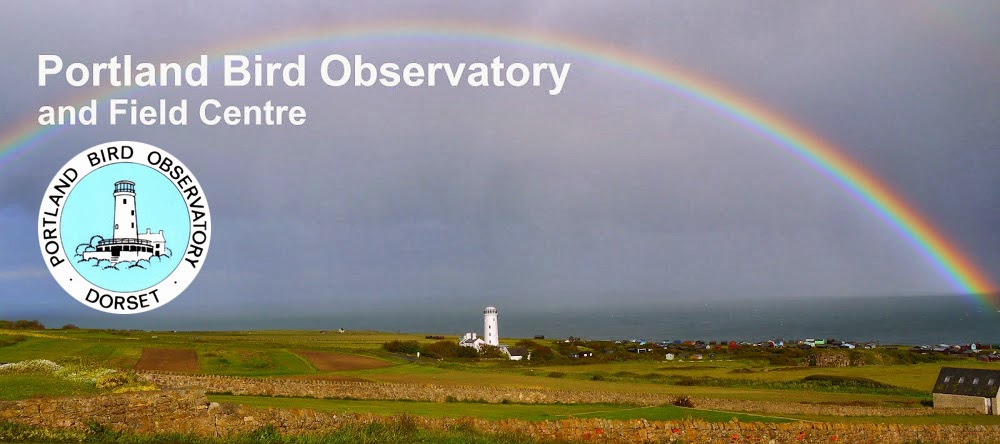So little's changing at the moment that a cut and paste of yesterday's report could very well suffice for today. The dreary, blustery Atlantic influence that's seen routine passage reduce to a trickle remained firmly in charge and the best on offer were the lingering
Hen Harrier and 3 each of
Merlin,
Black Redstart,
Firecrest and
Brambling on the land/overhead and singles of
Balearic Shearwater and
Arctic Skua through on the sea. The numbers - save perhaps for the steady passage of
Kittiwakes offshore - were sufficiently inconsequential as to not merit dwelling on. Tomorrow's another day!
Since it's been a pretty duff birding day we've finally been able to make a bit of time to look out some photos of the White's Thrush that was found dead in Weymouth on 12th October - even though it's a near miss from the Portland point of view it's well worth documenting for posterity. Credit has to go to Lawrence Dagnall for being inquisitive enough about the bird in the first place: Lawrence was engaged in some property maintenance in Roundhayes Close - a wholly unexceptional street in suburban Weymouth -...
...when he discovered a freshly dead large thrush laying next to the house he was working on (later examination showed it to have a broken neck so it'd presumably flown into a window or wall); being so large and obviously golden-spangled he assumed it must be a young Mistle Thrush.
Several days elapsed before Lawrence happened to call in at the Obs and mention this unexpected find; our curiosity piqued, we asked if he had any photographs of the bird and these quickly revealed its true identity. Remarkably, the corpse had remained in situ for four days and Lawrence offered to pop back to Weymouth and pick it up for us.
With a wing length of 165mm it seems likely to be a female (Svensson gives lengths of 169-176 for males and 164-173 for females), whilst age-wise the pointed, pale-tipped tail feathers and apparent moult-contrasts in the upper wing-coverts (longer and differently patterned inner greater covert, and differently patterned inner median coverts) indicate it's a bird of the year
Closer examination of the tail reveals the curiosity that it's got 14 tail feathers - White's Thrush is unique amongst Western Palearctic passerines in having 14 feathers (Cetti's Warbler has only 10 and the rest have 12; evidently some of the other races/species in the White's/Scaly Thrush group also have only 12 tail feathers).
Whilst this was the saddest of ends for such a fabulous vagrant there was still something very exciting about seeing it and appreciating the awesomeness of it having strayed to such an unlikely place in Dorset (it's the first county record) rather than to a vagrant-hotspot offshore island. Maybe it was also that we felt we had some sort of vested interest having once been sufficiently gripped by the idea of seeing White's Thrush in the breeding season that we travelled to The Urals to fulfil that ambition - and it'd turned out to be just as compelling an experience as we'd imagined!
Ending your days so ignominiously in a Weymouth back garden seems like a bit of a raw deal when you've been born in this sort of countryside...
For such a usually furtive species they weren't actually that hard to see in the early breeding season when they'd quite readily perch atop high trees to sing:
However, for full value they needed to be heard in the dead of night when all the Arctic Warblers, Bluetails and the like had shut up and literally the only sound to be heard in the gloaming was the mournful, ethereal whistles of White's Thrushes singing in competition with one other - utterly gripping! © Lawrence Dagnall & Martin Cade:




















































